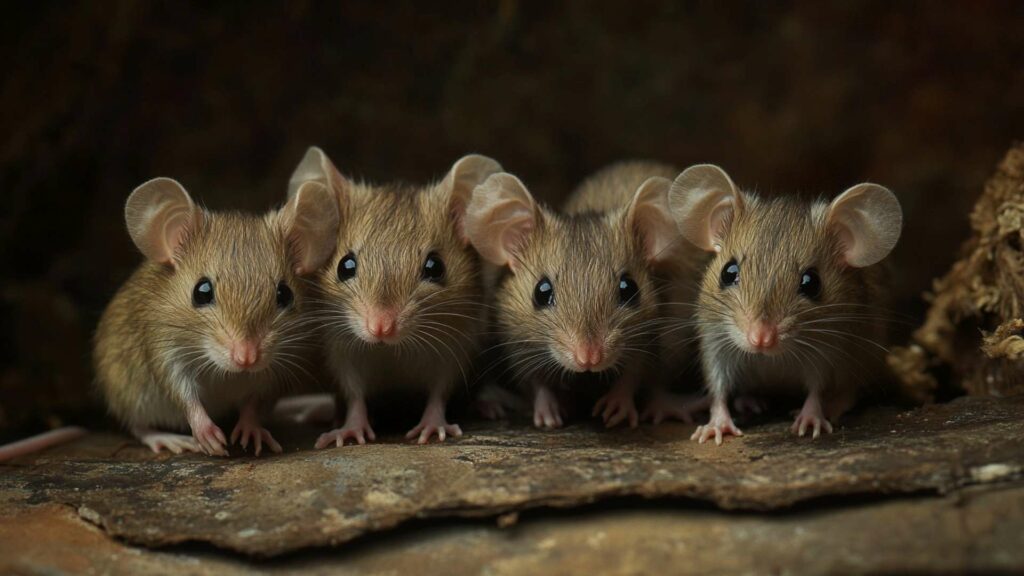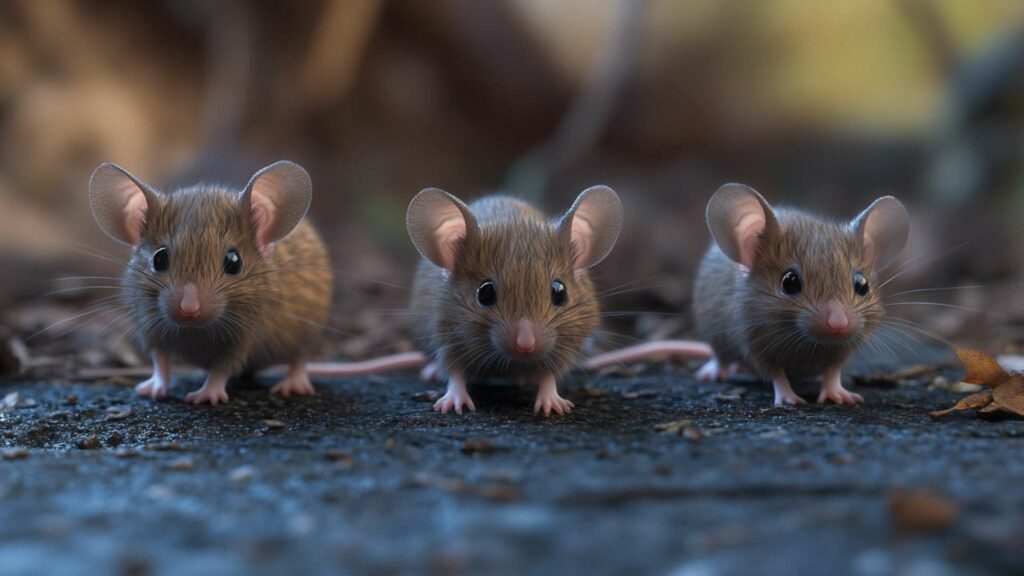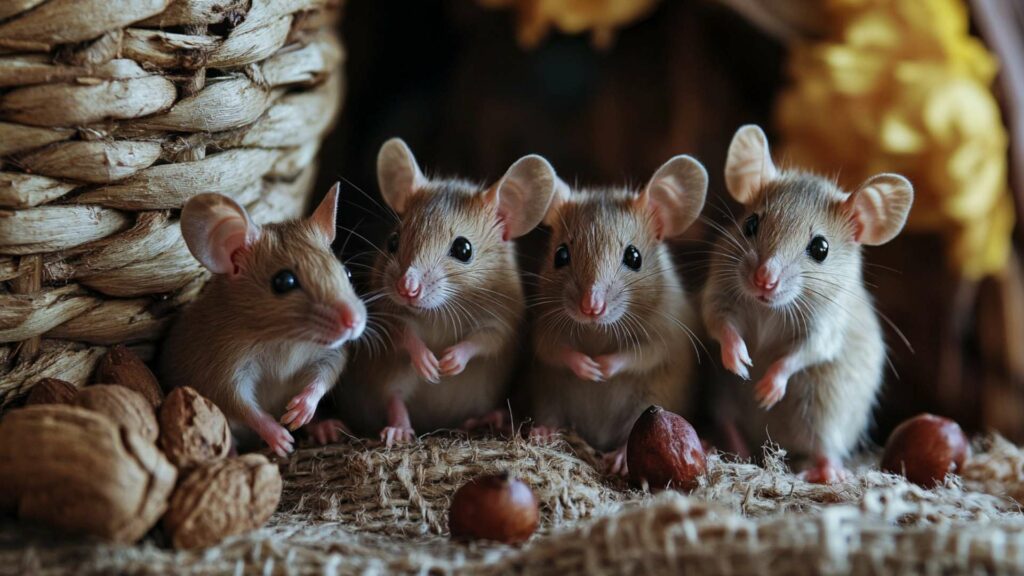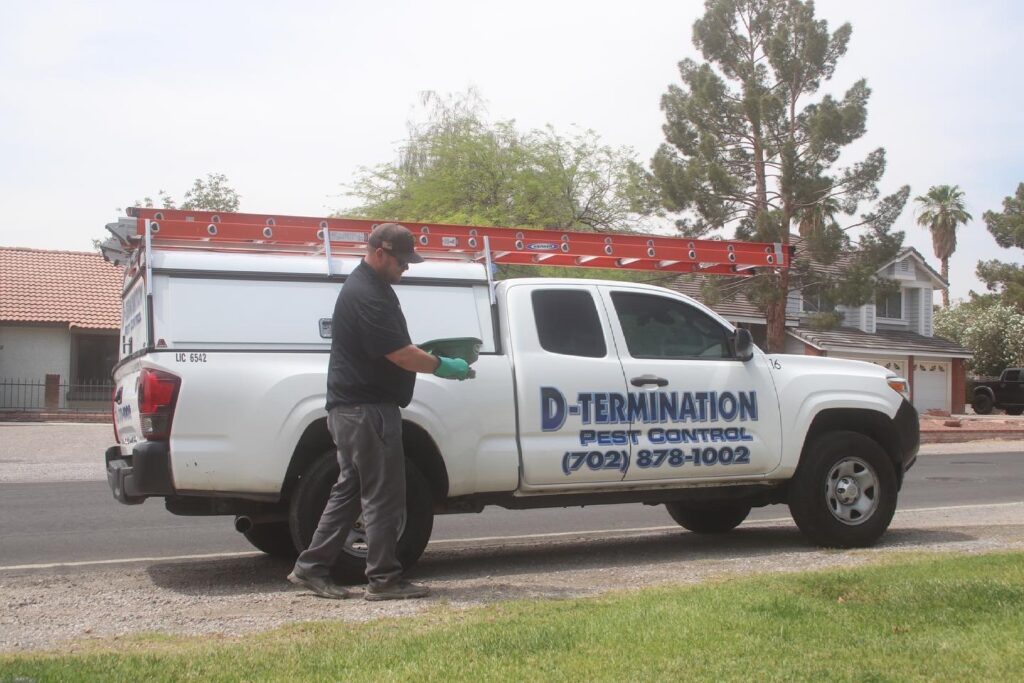Mice are tiny creatures that can cause a lot of damage and nuisance when they enter our homes. They are often considered a common household pest that can contaminate food, chew through electrical wires and walls, and transmit diseases to humans. Despite being such a pesky invader in our homes, mice have an interesting life cycle that is worth exploring.
The Importance of Understanding the Life Cycle and Reproductive Habits of Mice
It is essential to understand the biology of mice in order to control their populations. Their reproductive habits allow them to reproduce quickly and frequently, making it challenging to get rid of them once they have entered your home.
By understanding how they mate, grow, breed, and raise offspring, you can take measures to prevent infestations from happening or control them if they have already taken root. Moreover, studying the life cycle of mice allows us to learn about natural selection processes such as genetic variability and adaptation over generations.
We might also learn ways we can use this knowledge for important research into genetics or disease studies. The more we know about these creatures’ natural lives in the wild or controlled environments leads us down a path towards further understanding – which opens up doors for research opportunities that we might not even imagine yet!
Are you intrigued by the fascinating world of mice behavior and characteristics? If so, you won’t want to miss our comprehensive guide on uncovering the secrets of mice. Discover the hidden intricacies of these remarkable creatures by reading our in-depth article Uncovering The Secrets Of Mice: Exploring Behavior And Characteristics
Life Cycle of Mice
Gestation period and litter size

Mice have a relatively short gestation period of only 19-21 days. This means that within a month, a single female mouse can give birth to multiple litters.
The number of offspring in each litter can range from one to over ten, depending on the species and the availability of resources. House mice, for example, typically have litters of five to six pups.
Developmental stages: newborn, juvenile, adult
Newborn mice are blind, hairless and completely dependent on their mother for survival. They spend most of their time nursing and sleeping.
After about two weeks they start to develop fur and open their eyes. This marks the beginning of the juvenile stage where they start exploring their surroundings and learning important life skills such as grooming themselves and socializing with other mice.
As they enter adulthood at around two months old, mice become sexually mature and begin to reproduce themselves. In the wild, many will fall prey to predators or die due to disease or starvation before reaching their maximum lifespan.
Lifespan of a mouse
The lifespan of a mouse depends on many factors such as genetics and environmental factors like availability of food and exposure to natural predators. On average, wild mice may live only six months due to these factors while pet mice can live up to two years when given proper care. Overall, understanding the life cycle of mice is crucial in controlling infestations as well as gaining insights into behavior patterns related to reproduction such as mate selection and parental care behaviors..
Reproductive Habits of Mice
Mice are known for their prolific reproductive abilities, but what exactly do their mating habits entail? In this section, we’ll explore how mice reach sexual maturity and when they typically breed, as well as the various courtship rituals and behaviors that male and female mice engage in to attract mates.
Sexual Maturity and Breeding Season
Mice reach sexual maturity at an early age – females as young as six weeks old can become pregnant. On average, a female mouse will experience her first estrous cycle at around 35-40 days old.
The estrous cycle of a mouse, is the period in which a female mouse is receptive to mating; it typically lasts four to five days, during which she will mate multiple times with different males if given the opportunity. Breeding season for mice varies depending on environmental factors such as temperature and food availability.
In general, however, mice tend to breed more frequently in warmer months when resources are plentiful. A typical litter size for a mouse is between four and six pups, though litters of up to 12 or more have been recorded.
Mating Behaviors and Courtship Rituals
When it comes to attracting mates, male mice engage in a variety of behaviors designed to catch the attention of females. These might include vocalizations such as ultrasonic songs that are beyond human hearing range or physical displays like chasing or nipping at females’ ears or tails. Female mice have been observed “singing” too during courtship rituals using ultrasonic vocalizations.
They become sexually active only during their Estrus cycle after detecting pheromones released by males. Male mice also uses scent marking on potential female partner’s urine spots before attempting copulation.
These courtship behaviors can be quite complex, with both male and female mice engaging in intricate dances that involve body posturing, vocalizations, and physical contact. Once a pair has mated, the male will typically leave the female to gestate and raise their offspring on her own.
Nesting Behaviors
When it comes to nesting behaviors, mice are quite particular. They build nests to provide a safe and comfortable place for their offspring to grow and develop. The nests also serve as protection from predators, extreme temperatures, and other potential dangers.
Building nests for offspring is an instinctual behavior for mice. They use a variety of materials such as twigs, leaves, grasses, paper scraps, and even fabric fibers to create their cozy abodes.
The construction of the house mouse nest starts with a foundation of soft materials like shredded paper or soft grasses. Then the mouse will work on building up the sides using more substantial materials such as twigs or dried leaves until the nest is sufficiently sturdy.
Choosing suitable nesting sites
Mice are selective when it comes to choosing suitable nesting sites. They prefer areas that are hidden from predators yet still accessible for foraging purposes.
Nesting sites can vary depending on the species of mouse but generally involve small spaces such as wall voids, burrows in the ground or even abandoned bird nests. The location of their chosen nesting site is influenced by several factors including temperature regulation, availability of food sources in close proximity and protection from danger.
Common areas where people find mice’s nests include attics or basements where there may be plenty of insulation and clutter for them to build within – making it important to clear these areas out regularly! Overall they seek out spots that offer safety and security so they can raise their young without worry or fear of outside threats. These female mice also tend to use soft materials when building their nests in order to protect her babies as they are actually born naked.
Parental Care

Mice are social animals that live in small family groups, and they exhibit a high level of parental care towards their offspring. This care is mostly provided by the mother, who is responsible for nurturing the young and ensuring their survival.
Maternal care for offspring
The maternal care exhibited by female mice towards their young is an essential aspect of mouse reproductive behavior. After giving birth, the mother will spend a considerable amount of time nursing her light brown litter.
She will lick the babies clean and keep them warm by huddling with them to regulate their body temperature. As the newborn mice grow older, the mother will continue to groom them regularly.
She may also bring food back to the nest for her offspring to eat. In some cases, if one or more of her young become sick or injured, she may even reject or abandon them in an effort to increase the overall chances of survival for her other offspring. These mice may regularly become exposed to the world at a young age where they will eventually become adult mice.
Paternal involvement in raising young
While paternal involvement in raising young is not as common in mice as it is in some other animals, there are instances where male mice will assist with parental responsibilities. This behavior in most mice has been observed more frequently when multiple males share a nest.
In these cases, males may help with grooming and feeding the young mice until they become fully developed, and may even defend the nest from intruders. However, it should be noted that this behavior is not universal among male mice and may depend on factors such as social hierarchy within the group.
Population Control Measures
Mice are known for their incredible ability to reproduce quickly and in large numbers. This makes them difficult to control once they have established a nest in your home. However, it is crucial to keep their population under control as they carry diseases and cause damage to your pets and property.
Importance of Controlling Mouse Populations
Controlling the mouse population is important for both health and safety reasons. Mice are known carriers of various diseases such as salmonella, hantavirus, and Lyme disease.
They can contaminate food supplies with their droppings and urine, leading to serious health issues for humans. In addition, they can cause significant damage to property by chewing through insulation, wiring, and other materials.
Methods for Preventing Infestations

The first step in preventing an infestation is identifying potential entry points that mice might use to gain access into your home. Small cracks or holes around windows or doors should be sealed up with caulking or weather stripping.
Keep food sources sealed tightly in plastic containers or metal bins rather than leaving them out on countertops or tables. You can also consider using natural deterrents such as peppermint oil or dried mint leaves around areas where mice might enter your home.
Traps can also be effective if placed strategically around the home. If you do decide to use traps, make sure you dispose of the dead mice properly by wearing gloves and placing them in sealable plastic bags before throwing them away.
Keeping mouse populations under control is essential for maintaining a healthy living environment free from disease and property damage. By taking preventative measures early on, you can avoid having a full-blown infestation or mouse problem that could prove difficult to eliminate altogether.
Conclusion
Mice and rats are fascinating creatures with a unique life cycle and reproductive habits. Understanding these processes is important for controlling their populations and preventing infestations. From gestation to nesting, parental care to population control, we’ve covered the key points of their biology and behavior in this article.
One of the most interesting aspects of mouse reproductive habits is their mating behaviors and courtship rituals. Male mice engage in a variety of behaviors to attract a mate, including scent marking, vocalizations, and displays of physical prowess.
Female mice have a strict estrous cycle that helps them choose the most genetically fit males for mating. This careful selection process ensures that offspring are as healthy as possible.
Another important topic we discussed is nesting behaviors and parental care. Female house mice tend to go to great lengths to create safe and comfortable nests for their offspring, choosing sites that are hidden from predators and protected from the elements.
Once born, newborn mice are entirely dependent on maternal care for survival – but male mice may also help with parental duties! This cooperation between baby mice and parents gives mouse offspring a greater chance at survival.
While some may consider mice simply pests or laboratory animals, it’s clear they have much more going on beneath the surface than meets the eye! By understanding their life cycle and reproductive habits with an ability to easily create future generations, we can recognize them as complex beings with unique social structures – even if they do sometimes sneak into our kitchens uninvited!
Put an end to rats and mice with D-Termination: the leading pest control in Las Vegas.

Are you tired of contending with rats and mice in your Las Vegas property? D-Termination is your ultimate solution. Our team of experts specializes in completely eliminating these pesky rodents, restoring tranquility to your space. Wave goodbye to rat and mouse issues by opting for D-Termination’s effective pest control services today!
Get in touch with us at 702-919-6310 or visit dtermination.com to schedule your rodent control service and take back your space from unwelcome guests.
Frequently Asked Questions:
The reproductive cycle of a mouse involves the process of reproduction and the birth of offspring.
The reproductive cycle of a mouse typically lasts around 19-21 days.
The stages of a mouse’s life cycle include birth, infancy, adolescence, adulthood, and old age.
Mice are adaptable creatures and can inhabit various environments, including fields, forests, homes, and buildings. They are known to construct nests for shelter and prefer areas with access to food and water sources to increase their chances to survive.
If you found this article enjoyable, you might also find interest in the following related content:
Uncovering The Mysteries Of Mice: A Comprehensive Guide To Understanding Their Behavior
Unveiling The Mysterious Nightlife Of Mice: A Study On Nocturnal Activities And Movement Patterns








